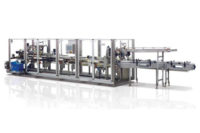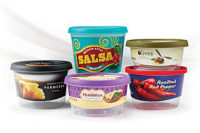Drinkable yogurts are a re-emerging presence in the dairy case, and there seem to be as many styles of products as there are manufacturers.
As with all product development efforts, it is critical to begin with a clear vision of the end product. Knowing the preferences of the target market helps define such important product characteristics as viscosity, flavor, color, the presence or absence of fruit particulates, sweetener and level of sweetness, degree of acidity and nutritional considerations such as added dietary fiber or probiotic cultures.
Choices must also be made about the positioning of the finished product in the marketplace. Some new offerings are branded as yogurts, and therefore must meet the standard of identity for this class of products. Others are labeled "smoothies" or some other fanciful name, which gives greater latitude in formulation.
Viscosity and product stabilization
Drinkable yogurts vary greatly in viscosity. Some are very thin, with an almost milk-like viscosity, while others are custard-like. Most fall somewhere in between these two extremes.
Very thin products can be made using pectins or alginates as the primary stabilizers. Typical usage rates are 0.3%-0.5%. Because of electrostatic changes that occur in the casein molecules during the culturing process, these stabilizers must be added to the yogurt after fermentation, which requires post-fermentation homogenization. A combination of guar gum and carrageenan can also provide a thin viscosity product without the need for down-stream homogenization. Products with mid-range to custard-like viscosities often use starches or modified food starches as the primary stabilizer at usages rates of 0.8%-2.0%.
Flavors, fruits and colors
Consumers are drawn to try new products based on flavor offerings. While traditional fruit flavors still dominate the category, people are intrigued by such exotic flavors as guava or mango, new flavor combinations such as peach and passion fruit, or ethnically oriented flavors. By offering new flavors and enhancing brightness and intensity, manufacturers are finding success in attracting and holding new consumers.Whether to use fruits, purees, flavors or some combination of all three in a given formula is more of a market direction decision than a product quality decision. Exceptional products can be made regardless of this choice. However, choice of stabilizer and finished product viscosity is influenced by the presence or absence of fruit particulates.
Products containing particulates tend to be medium to thick viscosity, and the percentage of fruit content typically ranges from 2%-8%. The fruit pieces themselves tend to be shreds as opposed to chunks.
In general, drinkable yogurt offerings in the United States tend to be fairly mild in acidity. Most are pH 4.2-4.5, with very few less than pH 4.0.
Nutrition and composition considerations
All yogurt and yogurt-containing products benefit from a "healthy halo," the perceived healthful benefit of consuming yogurts. This provides a marketing edge, which some manufacturers are further enhancing through the incorporation of prebiotics and probiotics.Prebiotics are dietary fibers that promote the growth of beneficial bacteria in the human digestive tract. Probiotics are the beneficial organisms themselves. Typical offerings of probiotics are Lactobacillus acidophilus, Bifidobacteria, Lactobacillus casei and Lactobacillus reuteri. These bacteria have been shown in scientific studies to promote digestive health in people, and have been linked to the increased absorbance of calcium and the reduced risk of certain cancers.
Dietary fiber is often offered at 2-5g per serving. Some manufacturers also offer added vitamins to further enhance their positioning as a nutritious alternative to other beverages.
Sugar and corn sweeteners are still the dominant sweeteners. Typical percent sugar solids in finished products are 9%-12%. A few manufacturers are beginning to experiment with various high-intensity sweeteners such as sucralose, aspartame or various combinations with acesulfame-K and fructose.
The drinkable yogurt category has room for niche, signature products. With so many options to experiment with, it is a product developer's dream.

